Target
Vietnam's cultural industries include: (1) Cinema; (2) Fine arts, photography and exhibitions; (3) Performing arts; (4) Software and entertainment games; (5) Advertising; (6) Handicrafts; (7) Cultural tourism ; (8) Creative design; (9) Television and radio; (10) Publishing, which are industries that create products combining cultural, creative, technological and intellectual property elements, meeting the people's consumption and cultural enjoyment needs and in line with the goals of international integration and sustainable national development.
Developing cultural industries into important economic sectors, striving for high growth and increasing export turnover of cultural industrial products in key and focal areas; contributing to promoting and spreading the historical, cultural and human values of Vietnam and affirming the national brand and position in the international arena. Developing the entertainment industry to meet the diverse entertainment needs of people and tourists; strengthening community connections, honoring media values and exporting entertainment industrial products to the world.

Illustration photo
Target by 2030
Cultural industries achieve an average growth rate of about 10% per year and contribute 7% of the country's GDP.
The labor force in cultural industries increased by an average of 10% per year, accounting for 6% of the total labor force of the economy.
The growth rate in the number of economic establishments operating in cultural industries averages 10% per year.
Strive for an average growth rate of 7% per year in export value of cultural industries.
Strive for most cultural industrial centers, creative spaces, cultural industrial parks, centers, complexes, and creative space complexes to be planned synchronously, invested in modernly, exploiting unique and distinctive values, associated with building local and national product brands.
Target by 2045
Strive for sustainable development of Vietnam's cultural industries, in which revenue contributes 9% of the country's GDP, labor accounts for 8% of the total labor force of the economy, the scale of digital cultural industry products accounts for over 80% of cultural industry products, the growth in export value of cultural industries reaches 9%/year and becomes a developed country in cultural industry and entertainment industry in the Asia region, affirming Vietnam's position on the world cultural industry map.
Development orientation
Develop cultural industries in accordance with the potential, advantages, and development plans of the locality, in accordance with the provincial administrative units arranged according to the decision of competent authorities; develop according to key economic zones; select a number of provinces, cities, or localities with favorable conditions to play the role of connecting centers, creating momentum for the development of cultural industries in the whole region; strengthen regional and local connectivity, infrastructure systems, and cultural institutions.
Develop businesses operating in cultural industries, create a professional and synchronous ecosystem between creation, production, business, promotion, consumption combined with intellectual property protection. Build distribution centers, promote the export of cultural industrial products, focus on existing markets and expand to potential domestic and international markets.
In the period up to 2030, Vietnam's cultural industrial products will focus on meeting the domestic market, promoting exports, and initially focusing on foreign markets with a large Vietnamese population. In the period up to 2045, maximizing the professionalism, creativity, and competitiveness of Vietnam's cultural industrial products in the international market.
Focus on developing the core and key 06 cultural industries (Cinema; Performing arts; Software and entertainment games; Advertising; Handicrafts; Cultural tourism), forming connections, increasing product value, promoting the ability to exploit and transform cultural values into national soft power.
Tasks and solutions for implementation
Common tasks and solutions:
Strengthen communication and raise awareness;
Perfecting institutions, mechanisms and policies;
Human resource development;
Infrastructure development and investment attraction;
Application of science, technology, innovation and digital transformation;
Market and product development;
Promote international cooperation;
Strengthening intellectual property protection;
The Decision also outlines key tasks and solutions for six cultural industries including: Cinema; Performing arts; Software and entertainment games; Advertising; Handicrafts; Cultural tourism.
Implementing organization
The Ministry of Culture, Sports and Tourism develops a plan to implement the Strategy; directs and promotes the role of the focal agency in orienting and guiding relevant agencies and localities to develop and organize the implementation of the Strategy implementation plan.
Preside and coordinate to build, perfect and propose necessary and appropriate mechanisms and policies and review and build effective coordination and linkage mechanisms to develop cultural and entertainment industries.
Preside over the development and submission to competent authorities for promulgation or promulgate under its authority legal documents for cultural industry fields directly managed by the Ministry of Culture, Sports and Tourism.
Preside over and coordinate with the Ministries of Public Security, Science and Technology, Finance, Industry and Trade, relevant agencies and localities to build a database on cultural industries, and simultaneously integrate it with the national database; build a set of statistical indicators on cultural industries and statistics on the contributions of cultural industries to socio-economic development according to the provisions of law.
Regularly monitor, urge and organize inspections and supervision of the implementation of the Strategy; periodically report to the Prime Minister every year. Organize interim (2-3 years) and final (5 years) reviews to evaluate the effectiveness of the implementation of the Strategy, and report to the Prime Minister. Timely propose amendments and supplements to the Strategy if necessary.
The Decision also sets out specific tasks for ministries, ministerial-level agencies, government agencies; People's Committees of provinces and cities; and associations, unions and organizations related to cultural and entertainment industries.
Source: https://bvhttdl.gov.vn/phe-duyet-chien-luoc-phat-trien-cac-nganh-cong-nghiep-van-hoa-viet-nam-den-nam-2030-tam-nhin-den-nam-2045-20251116102754755.htm


![[Photo] General Secretary To Lam receives Vice President of Luxshare-ICT Group (China)](https://vphoto.vietnam.vn/thumb/1200x675/vietnam/resource/IMAGE/2025/11/15/1763211137119_a1-bnd-7809-8939-jpg.webp)

![[Photo] Prime Minister Pham Minh Chinh meets with representatives of outstanding teachers](https://vphoto.vietnam.vn/thumb/1200x675/vietnam/resource/IMAGE/2025/11/15/1763215934276_dsc-0578-jpg.webp)















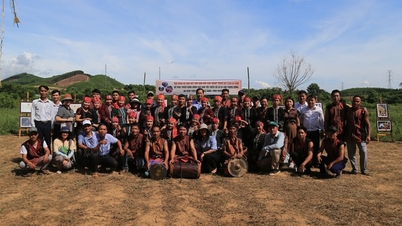
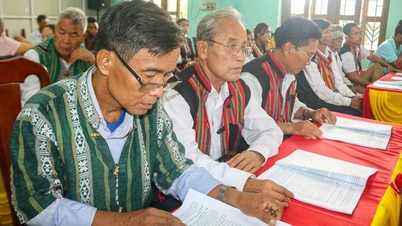
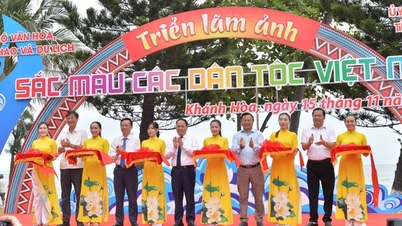
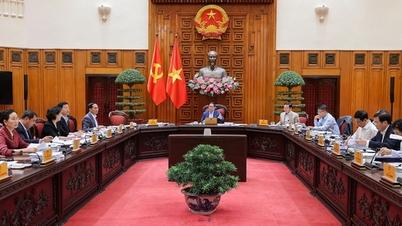














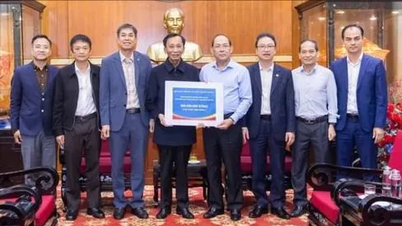
























































Comment (0)